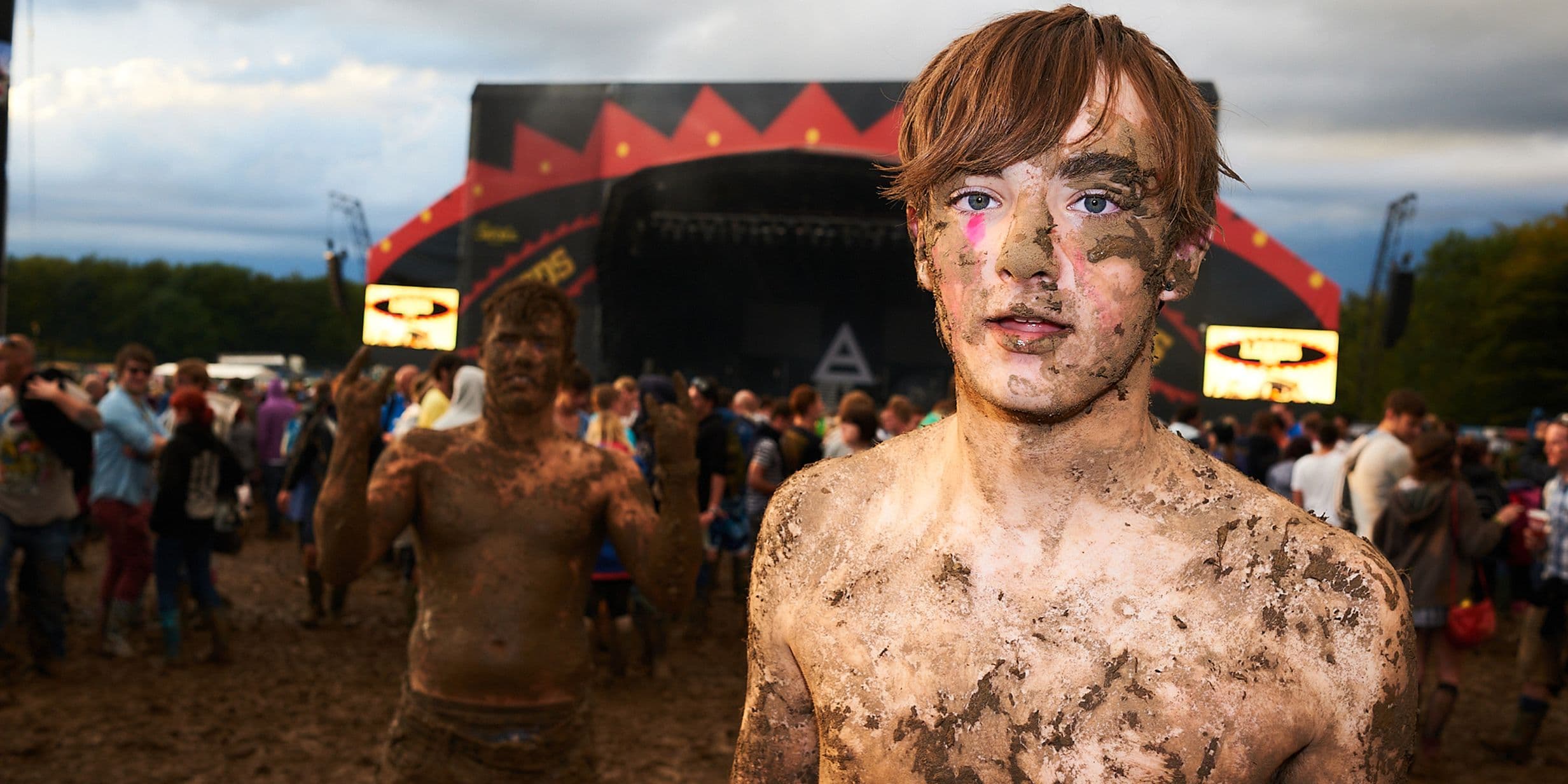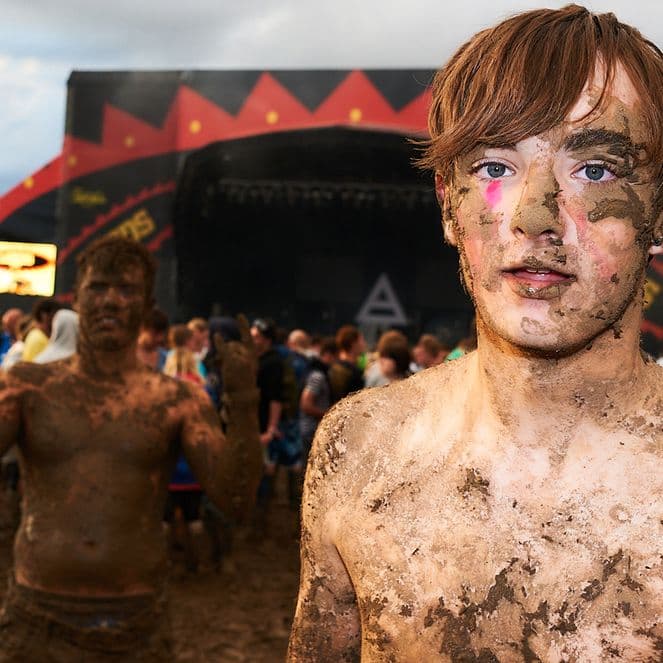A chance encounter at an east London flat sent Marc Sethi into the world of festival photography, shooting his first event for free before establishing himself as an expert in the field. That first gig – Latitude Festival – led to seven years as lead photographer, eventually managing teams across Reading, Leeds and Latitude. From there, his career took off, capturing Glastonbury, Coachella, Snowbombing, Outlook, Dimensions, Big Chill and more for a mix of magazines, PR agencies and global brands.
“I had some amazing opportunities and fortune early on, with incredible help along the way, too,” says Sethi, who’s now been working as a freelance photographer for over 15 years. “My main interest in photography is always the people. I get excited branching out into all aspects of how we as humans integrate with each other culturally.”
Over the years, he’s also photographed musicians, footballers, portraits and editorial work, and now balances commercial clients like Nike, Sony and UEFA with charity work for Mencap and London Youth – though festivals remain close to his heart. All of which makes Sethi an authority on capturing the unique essence of live events. This summer, with a swathe of festivals on the horizon, we asked him about life as a festival photographer – and how we can all take better shots.
Photo: Marc Sethi
Photo: Marc Sethi
Photo: Marc Sethi
Photo: Marc Sethi
Photo: Marc Sethi
Photo: Marc Sethi
What makes a festival a compelling place for a photographer?
People, energy, togetherness. I love observing how each festival represents. There’s an opportunity to experience and photograph different parts of society coming to celebrate in their own particular way.
What are among your best memories of shooting at festivals in the past?
It’s difficult to say because it was an incredible period of life when I was in the thick of it – there’s also so many I can’t remember. A few that do stick out in my mind are going to Sziget with the Kaiser Chiefs, and the lead singer said I could shoot anywhere apart from in front of him. At one point I was standing on the edge of the drum kit with 80,000 people in front me. It was incredible, and probably the closest I’ve ever come to knowing what it feels like to be in a band like that (I think every music photographer has a little frustrated band member in them).
But really, all the times I’ve been on stage with amazing artists were highlights. The trust you get is very special, which is something to respect and cherish. Another is the first time I got in a sound tower while shooting M.I.A. She kickstarted a stage invasion, which was incredible to shoot, and it pushed me to spend a lot of time blagging my way to the top of towers. It would be ridiculous not to mention my first time at Outlook, too. It used to be based in a Croatian fort right at the end of the festival season, and it became a real festival family for years. I hit my flow with Outlook – and created one of my favourite festival galleries.
What skills do you need to be a successful festival photographer and why?
It depends which part! Some people just shoot the live work, so in that instance you have to be quick because you’re only allowed to shoot during the first three songs. For documentary-style photography, you have to be personable and curious. Also the grade in finishing is really important. Find your own style with it, and enjoy that part of the process too – it matters.
What are the challenges associated with taking photos at festivals?
Long days. Working on a festival team you’re shooting and uploading from afternoon to evening, and even through the night, for days on end. The photos are sometimes required in real time for socials, too. It’s hard work. You also need stamina and strength for lugging gear around all day.
Photo: Marc Sethi
What guidance would you give people wanting to capture performing artists in a memorable way?
Watch their sets beforehand. Performances can be repetitive, so you can learn movements and make sure you’re in the right place at the right time. Also practice fast moving shooting in low light. Mostly this is how it is, and if you can shoot well in low light then anything more lit becomes incrementally easier. Shooting in low light requires a good sensor, so the camera quality will determine the sharpness of the image. Also, feel the rhythm of the music – there’s rhythm in the photography also.

Photo: Marc Sethi

Photo: Marc Sethi

Photo: Marc Sethi
What guidance would you give people wanting to capture a festival’s atmosphere, crowds, and individuals in a memorable way? And are there any ethics to consider regarding the latter two?
When you’re working for a festival, it’s understood that everyone has given permission to be photographed by having a ticket, so from an ethical point of view, there doesn’t seem to be an issue. I tended to shoot until I was told off. A lot of PR work is taken on long lenses, which makes beautiful shallow depth of field easily possible – and you can also observe nice scenes from a distance.
Then when you get close, easy intimacy and being personable really helps. I like communicating with people when I see something interesting going on, then getting involved with them for a short amount of time, creating fast relationships to photograph in that moment. It’s a great place to be, so get involved!
From a technical point of view, a decent prime lens for close work is really nice. If you’re using a smartphone to shoot festivals then you already have the potential to get in close to subjects. It’s so acceptable to have it out these days that finding angles and compositions should be much easier. Look for nice light and interesting form in each shot.
Are there any unusual aspects of festivals that can translate into strong photographs that tell a story?
Each festival has its own idiosyncrasies. I used to shoot Reading Festival – it was about youth culture and felt like a coming of age. Outlook was all about the sound systems and the bass culture. Glastonbury is all about… Glastonbury. Each one has its own unusual aspect, which is up to the photographer to dig out. This is also dependent on the photographer’s eye and individual perspective. What’s unusual to one is normal to another, so the idea that we’re telling a story that both represents the photographer and the place is important.
Photo: Marc Sethi
What are some of the best times to be taking photographs at festivals and why?
For PR, the magic hour is always special because of the low angle of the sun. There’s so much to work with, and it changes so fast that opportunities are everywhere. And then when the party kicks off, capturing that peak-time energy is critical and you have to be on your game as soon as things start to get wild, and until the headliner finishes (and at the afters, if you’re that way inclined). Again, remember that each festival has its own speciality, so research on what is going on throughout the days is important.
Photo: Marc Sethi
Photo: Marc Sethi
Photo: Marc Sethi
Photo: Marc Sethi
How do you deal with negotiating weather/lighting as a photographer at festivals?
I’m a big fan of photographing what’s in front of me. If the weather isn’t what you expected, then just get involved anyway. British weather is unpredictable and cloud cover is actually better for skin tones than harsh sunlight. Use what you’ve got, and figure out what’s looking good in the moment. If it’s heavy rain and you’re trying to document what’s going on, then you can also use that. The idea that British people crack on whatever the weather is part of this, so it can be represented amazingly through good photography.
What’s the one tip you’d give photography novices to instantly raise their game?
For a potential career photographer, I don’t think there is an instant game raise – I think I was quite lucky. But my general tips are: work hard, learn from mistakes, be tenacious, and keep finding out where you can incrementally develop the craft to get better and better. Bother people, and don’t be a d*ck (I have also been a d*ck though – apologies to anyone on the end of that). For people who are looking to just improve their festival photography with either smart phones or cameras, try to use light differently, and look for shapes and angles in images that you wouldn’t normally go for. The wonderful thing about digital is the ability to experiment.




